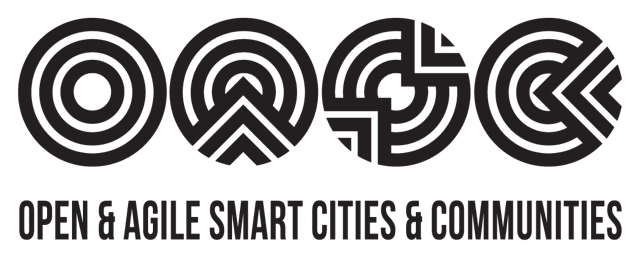Innovation rarely happens by itself. Emerging technologies, and the start-ups often behind them, rely upon supportive innovation ecosystems for their business development. When common standards are missing from these ecosystems, however, it can be more difficult for new products to reach scale.
In my time working on smart cities and local government digital services, I’ve been considering how the ways standards are developed and promoted could be more closely tied into business and innovation ecosystems.
For smart cities, a defined process already exists for how standards are created. It’s similar to the development process for technical standards in other fields and places the publication of the standard at its centre, while there is generally an ecosystem of stakeholders who fit into the process at different times. It typically revolves around five stages:

Standards for local government require a slightly different approach. For one thing, most smart city-related standards are voluntary, with no mandate for cities to adopt them, so simply publishing a standard is not enough.
And currently, some fundamental questions still remain unanswered: How do we know that a standard meets the need it was designed for? How do we incentivise adoption of these standards? How can we prove (and show) that they work? And how do we keep track of all of this?
Here are 4 ways I think could help to better integrate standards with the wider ecosystem for city and local government innovation.
- Identifying relevant needs
User needs are starting points for many innovation projects. Standards, however, are often developed by working backwards from a desired state.
If an objective is to create a framework for an integrated mobility data platform, for example, a next step might be to define the set of requirements to be addressed by the standard (such as ontologies, data schema and formats). But in my experience standards groups lack adequate representation from those dealing with the everyday problems new standards seek to solve. In this example, this would be the people working in digital/IT and transport planning teams who know exactly what their pain points are, and who can answer ‘what if?’ questions about the value of greater data harmonisation within a service area.
Organisations are always talking to others about how to solve the common problems they share. Groups developing standards therefore need to have better defined mechanisms for tapping into these existing communities of practice to bring their experience to bear, and look for wider opportunities to apply a ‘standards lens’ to existing collaborative innovation projects.
- Pilot and assess
Innovation projects such as those funded by the European Commission’s Horizon 2020 fund revolve around pilot cities to test new solutions. Why should standards development be different? An approach like the Open Geospatial Consortium’s community standards has proven successful. That being said, it is not enough to just redress the balance between theoretical and practical approaches – measuring the potential impact, even at an early stage is vital if voluntary standards are going to gain traction.
Publicising business case analyses based on pilot implementations can be useful for capturing learning, and communication within organisations and ‘follower’ cities to inspire adoption. The GOV.UK Verify for Local programme in the UK, for example, produced analyses as part of each phase of development, including Discovery Cases that assessed the potential of digital transformation in different service areas. I should say that it has been hard to locate public examples of business cases that I have worked on previously, so making public-facing version would be an improvement!
- Incentivise Adoption
The benefits of a standard should be so good that it would be silly not to adopt it. This generally only happens, however, if it is mandated (by law, for example) or if it reaches a tipping point of adoptees, which in turn shifts the market. In local government a sufficient number of buyers need to request that a product or service be designed according to a standard, so that suppliers begin to create their offerings based on it. That’s the theory anyway. So how do we reach that initial tipping point?
A common way of incentivising new product development is through an innovation competition – but these rarely link directly to standards. Funded competitions, even hackathons, that challenge entrants to develop a new tool based on a standard both engage the market in concept development for new products early on, and instantly improve awareness.
The SynchroniCity project, for example – based on the OASC principles – has launched an open call with up to €3 million for SMEs, cities and large businesses to work together to develop tools based on standards defined in the first stage of the project. Watch this space to follow the project – and it’s not too late to apply – the open call closes on 30 September!
- Raise Awareness
Workshops, pilots, reports and open calls are wonderful forms of engagement. But do they go far enough?
Relatively little attention is given to marketing by standards bodies and governments. A sustained communications campaign is vital to spreading awareness far beyond the bubble of immediate participants.
Once a standard is published, its life is just beginning. Not only does it need to be shared as widely as possible, it needs to be really easy to access and use. Stories of use and benefit should be captured and shared through different mediums – in the past I’ve found that even the most simple video can be a powerful way to reach a wider audience – and implementation guidance provided for users, including introductions for the less technically-minded. Communication should work both ways – as a living thing, a standard is subject to change with open channels for feedback and an established process for updating.
These are just a few ideas for how we could create better bottom-up standards and support their adoption, I’m certain there are plenty more – please share your thoughts (and critique mine!) in the comments below.
About the author

Matt Wood-Hill has been working within the OASC network in the field of smart city strategy, standards and local government service transformation. Find him on LinkedIn or Twitter. Read Matt’s first blog for OASC on why standards are key towards a global smart city.

